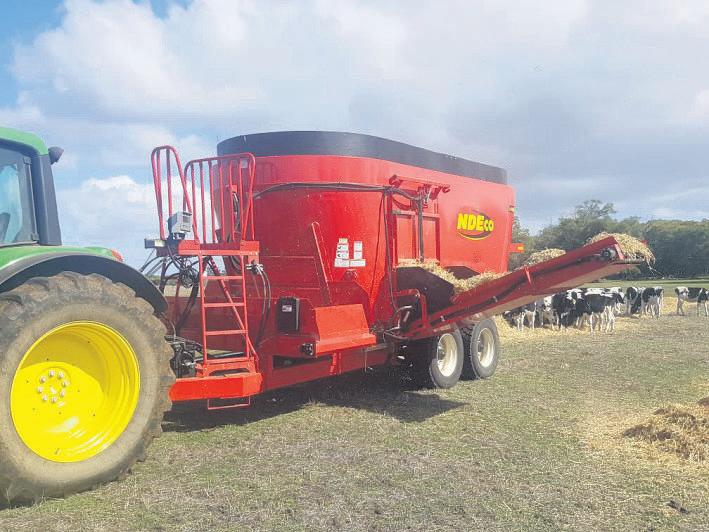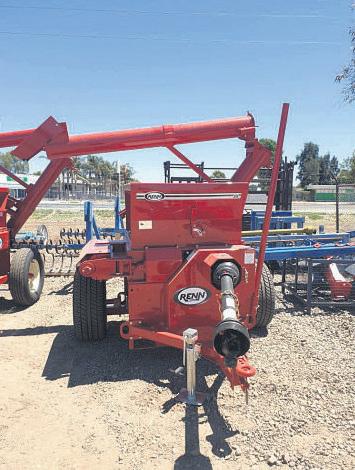
3 minute read
Ahome for Aboriginal healing

Philip HOPKINS
IN SouthGippsland, the firststeps have been taken in atraditional owner project that has the potential to help transformthe lives of the region’s Aboriginal people and become asymbol of Indigenous culture.
‘Warrigunya’, it’s called.
Run by anot-for-profitIndigenous corporation,itaims to provide safe andaffordable housing for men exiting prison -akey need identified by Aboriginal people as away for freed inmates to transition back to the community.
Recidivism rates arehigh in the Indigenous community due to lack of housing, job and opportunities.
Once basic needs aremet, the concept is forthe men to heal, reconnect with their families and culture, and learnskills to empower them to take anew path in life.
The Aboriginal meninFulham Correction CentreinSale, who will use the Warrigunya centre, wereconsulted and made key decisions about the name of the project and the overall design of the building.
Warrigunya is based on self-determination.
Akey director of the group is Uncle Alan Coe, who in 2019 received two significant awards: The Department of Justice and Community Safety’s Elder of the Year Award, and the Aboriginal Justice Committee’s EastGippsland Elder of the Year Award.
“It is time we as apeople havethe opportunity to control our destiny without the constructs of misunderstanding and control,” he says.
Over the past two years, local Aboriginal and non-Aboriginalvolunteershave put in hundreds of hours, probono, on the project.
One of those is Chris McEvoy, managing director of Radial Timber in Yarram.
“The group was told that they could potentially get agrant for such aproject, but they needed to get land. No grant allowed for the purchase of land,” he said.
That’s whereMrMcEvoy came in.
As an owner of plantations that will eventually be the feedstock for his sawmill, he was able to split off20acres (eighthectares) from his estate for the site of Warrigunya.
“Pre-COVID in 2019, we started looking. The firstwecametowas onthe South Gippsland Highway at the corner of Gifford Rd, Darriman. Alan, the elder,assoon as we got there, noticed we had four emus just walk across and come together,kangaroos werejumping and awedge-tailed eagle was over head. Mr McEvoy noted, he regarded those as asign.
“No, we won’t look at the other sites,” Uncle Alan said.
“Theenvironmentistelling usthisis whereitneeds to be.”
“Wehad our land,” said Mr McEvoy, who gifted the property on a50-year,peppercorn lease -$1ayear for 50 years.
Also, the land chosen is at the headwaters of Warrigal River the site of an infamous massacre in the 19th Century - “a terrible thing,the worstmassacre of Aboriginal people in Gippsland”, he said.
“All the people we havespoken to, traditional owners both involved in project andothers, all feel that this is apart of the healing process.
“With land in hand, the Warrigunya group was able to securea$3million grant from HomesVictoria,and achieve all the necessary permitsand approvals, and abuilding contract.


Forthe design, thetraditional inmates of Fulhamdecided that the house should have the shapeofthe pelican Boran, which is the main totem of the GunaiKurnai people.
Therewill be eight self-contained units housedunder the wingsofthe pelicanshaped home.
Therewill be enough space for 16 men, two per unit, or even singles, with aminimum of eight people.
“The mencan catchtheir breath,have housing for six to 12 months, start to reconnect with society and families and with their community, and hopefully help with employmentand any mental health issues,” Mr McEvoy said.
Aworkshop will be set up on site, with woodworking equipment, including woodwork training and areas wherepeople, for example, can paint.
“It has internal wood panelling. We hope to have renewables -solar panels -onthe wings. All would love to have self-generating power,” Mr McEvoy said.
Fast forwardayear-and-a-half after long delays with building and planning permits, COVID-19, price increases for materials and firesurveys -“the budget they gave was nowhere near sufficient”, Mr McEvoysaid.
Warrigunya is $1.5 million short to complete the project.
“Wefinally started -the slab is down -but we only have enough money for one wing,” he said.
“We’ve got aone-wing pelican at the moment.
“It’s abit of aslap in the face.
“We’ve already spoken to the guys in jail, who almost see it as an insult.”
As Uncle Alan Coe put it: “It’s like building achurch without the stain glass windows or altar.Our needs and requirements as per our vision have not been met and this is very detrimental for the men we areseeking to help at Warrigunya”.
Alocal builder is using an Indigenous crew doing the groundwork on the car park and the road-making; acrewofAboriginal workers is doing the fencing.
“The builder is trying to use as much Indigenous labour as we can for the project,” Mr McEvoy said.
“This is not awhite colonialproject where everyone is making money, we’retrying to get local community involvement. Broadly, unless you get cultural leadership for the whole concept, it is not accepted otherwise.”

Help has come from one ‘neighbour’ -the

Star of the South windfarmproject, which has donated money for works.
An operational plan for Warrigunya has been prepared by an experienced Aboriginal project consultant.
“Weknow how it will be run, but that part needs to be financed too. It’s too important aproject not to be funded,” he said.
As a24-houroperation,itwillrequire $1million ayear to run.
“The immediate need is to try and get the project finished under its original vision. In the middleofnowhere, apelican surrounded by plantations, it will be quite a spectacular thing, somethingeveryone can be proud of.”
Moreinformationis available at www. warrigunya.com









